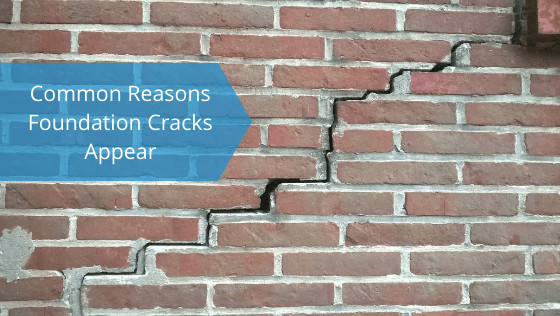Homes are built to withstand most of what nature can throw at them. But, over time, they start to show signs of age and wear and tear. One of the key places you’ll see signs of aging is your home’s foundation . Cracks in your house foundation can be cause for concern. These cracks can let water in, letting mold and mildew grow, or, even worse, lead to the flooding of your basement. These cracks could also mean the settling of your home and structural damage that you cannot see by just glancing around.
If caught early, foundation crack repair can sometimes be a minor project for a homeowner. But if your home’s foundation is settling and the cracks are left to grow, these foundation problems add up to costly foundation repair services. But with so many different types of foundation cracks, how do you know which ones are normal? Can you stop your foundation from cracking? Let’s take a look at the different types of cracks and what can cause them.
What are foundation cracks?
A foundation crack is a crack in the cement at the base of your home or cracked brick. Some of these cracks are minor and are a “normal” part of having a home. . Other cracks can mean serious damage to your foundation. It is important for your home to sit on a stable foundation, otherwise, its structural integrity is compromised. If you’re ever unsure of the type of crack in your foundation, it’s important to get it inspected by a professional.
Types of foundation cracks
As a homeowner, it’s a good idea to have some basic knowledge of the different types of foundation cracks that can occur so you know when to call for help. The most common types are:
- Vertical foundation cracks. Typically not a cause for concern, these cracks are a common sight in most homes. They appear when rain exerts pressure on your foundation, and they can usually be repaired with a water-resistant epoxy.
- Horizontal foundation cracks. All types of horizontal cracks indicate serious structural problems in your foundation. These cracks usually run about mid-height on the wall and can cause a basement wall to bow inward. If you find a horizontal crack, get in touch with your foundation repair contractor about how to permanently repair the foundation crack.
- Diagonal foundation cracks. Stemming from differential settlement, these cracks run diagonally along your wall at a 30-70 degree angle. These cracks are not always immediately dangerous. They should be checked by a professional, however – if left unrepaired, they can cause significant structural problems.
- Stair-step cracks. These cracks are the ones that look like walking down the stairs. They run in a diagonal line from the end of the wall or a joint in the wall. They usually cause the mortar between the cement blocks to fall out. This is the most dangerous type of crack. If you find a stair-step crack starting, call a professional immediately to discuss a repair plan for your foundation.
Causes of foundation cracks
Foundation damage can stem from many different environmental factors, such as overly wet or dry soil, inadequate drainage around the home, extreme changes in temperature, frost heaves, flooding, and even earthquakes. While these environmental factors are the most common reasons for foundation cracks, sometimes people create these problems on their own. Poor construction, excessive backfilling, and impact from a skid steer or other heavy equipment can also cause damage to your foundation.
Should you repair your foundation?
While some cracks may be left alone for a short time, you should always repair the cracks in your foundation. If left too long, they will grow, creating more damage than what you initially found. Your home’s structural integrity is based on how well your foundation holds up, so leaving a crack unchecked could cause your house to become unstable.
If you find a crack that concerns you, let Moisture Loc help you diagnose and inspect your foundation. Contact us for a free consultation. We can find a repair plan that works best for your home.


